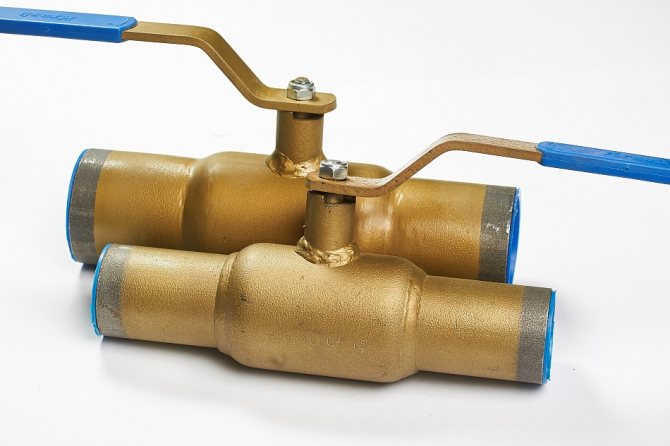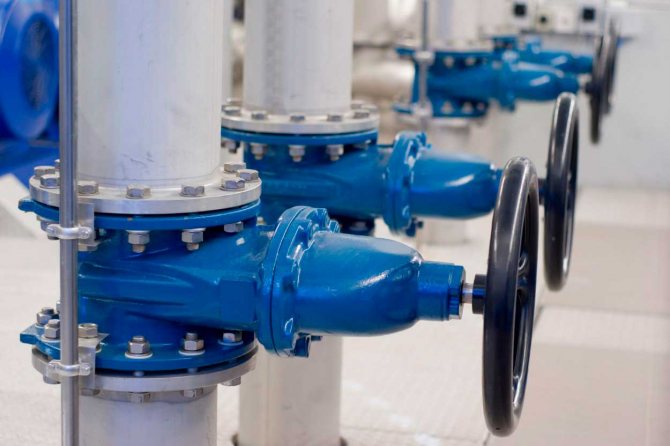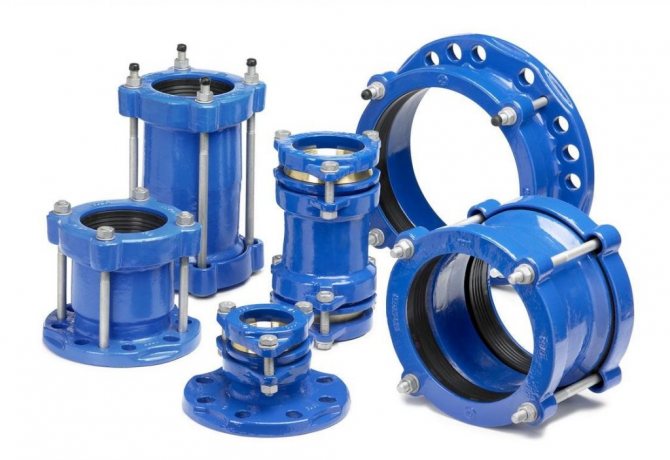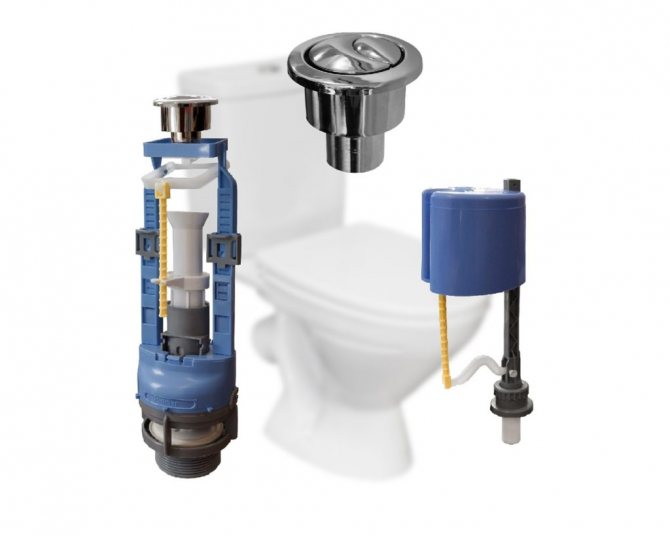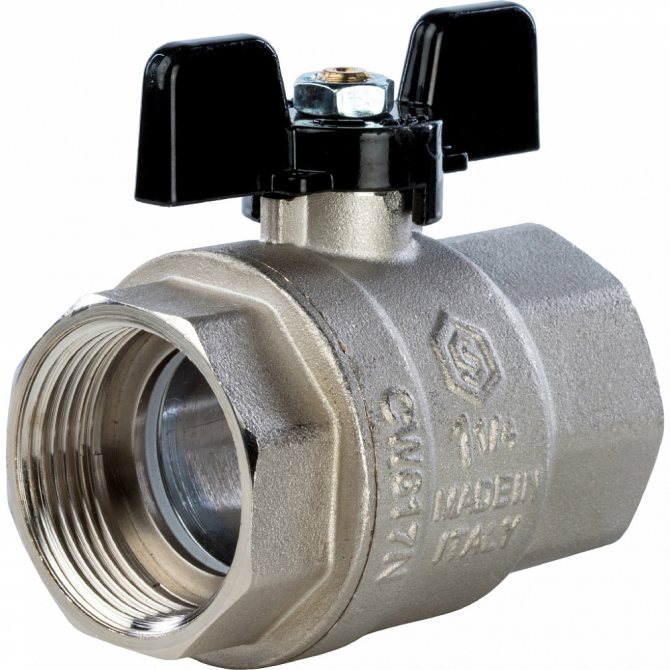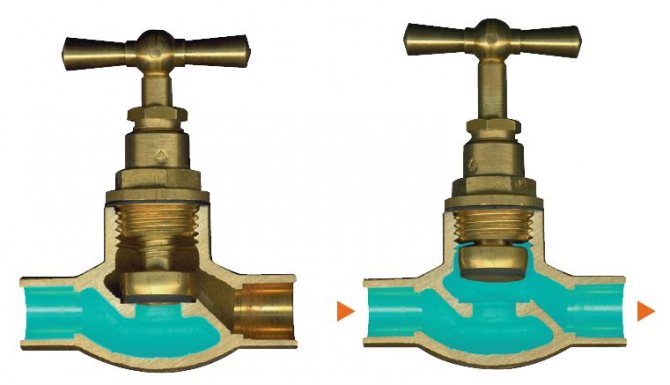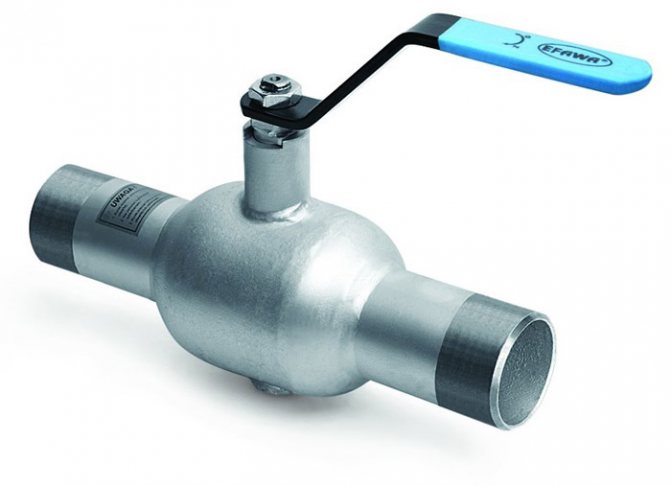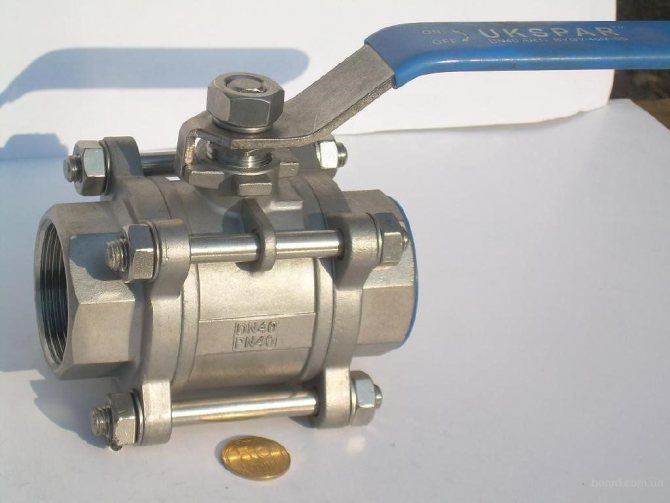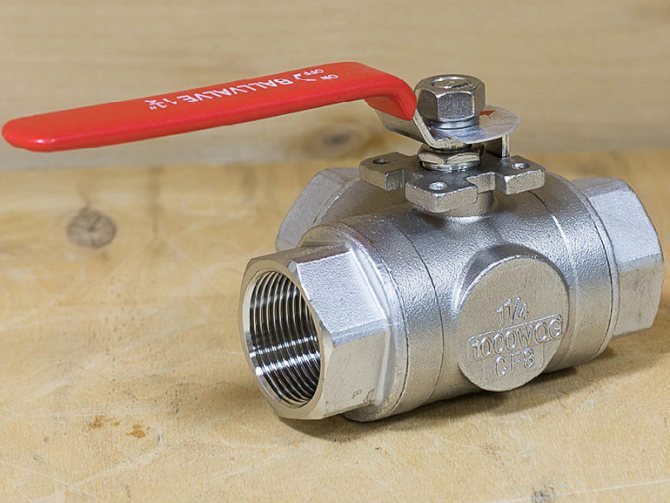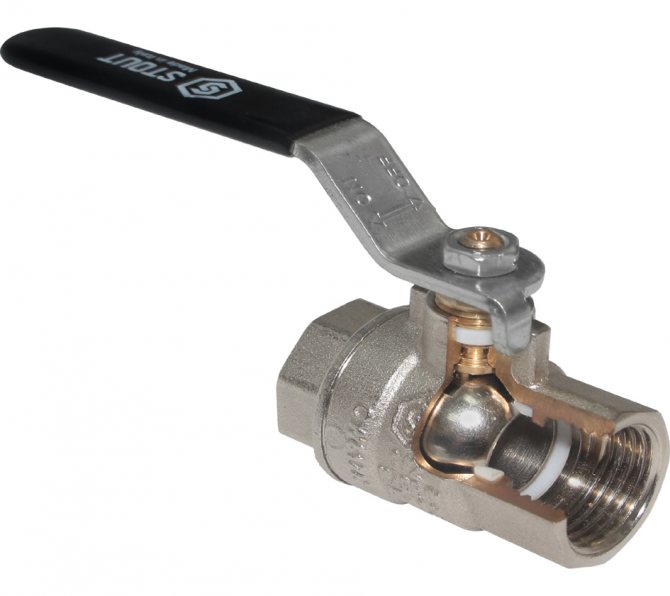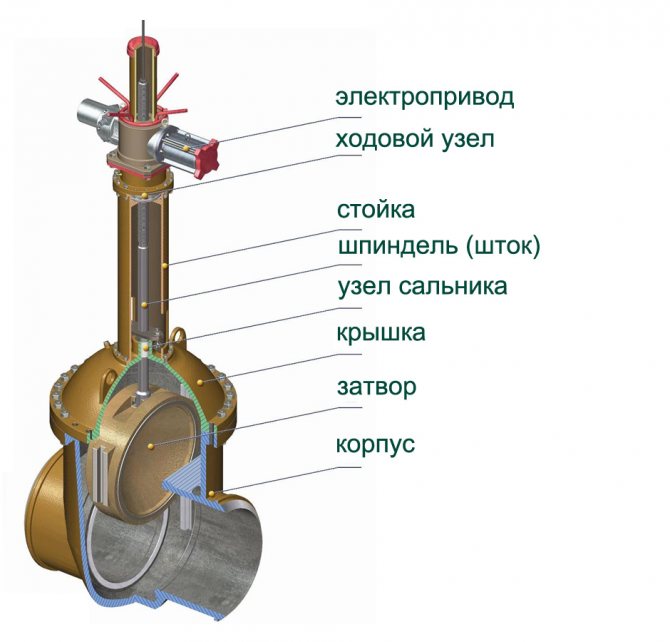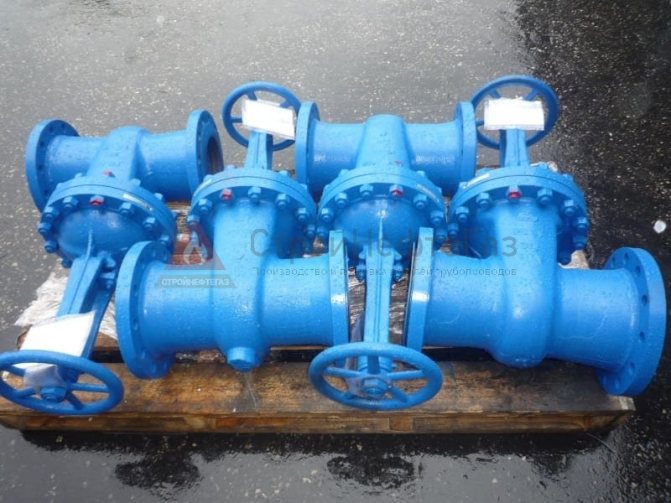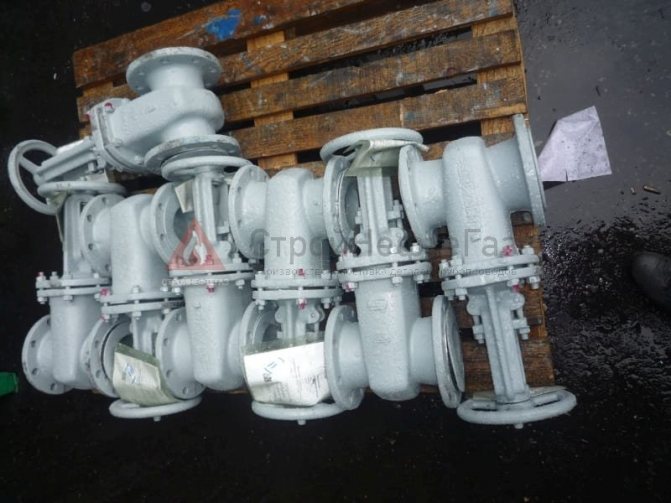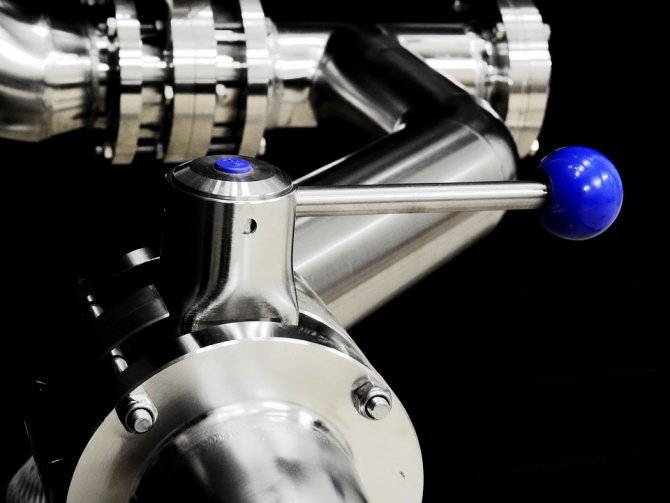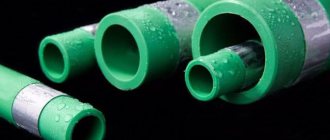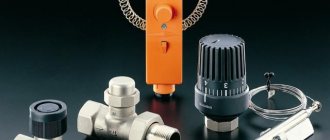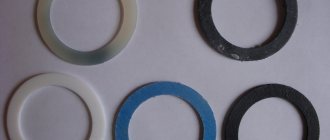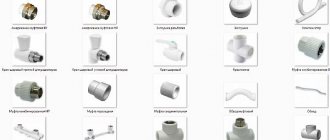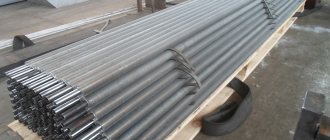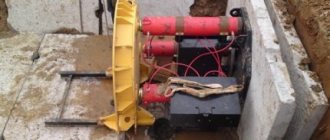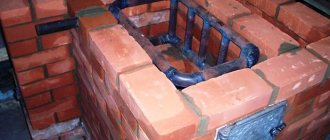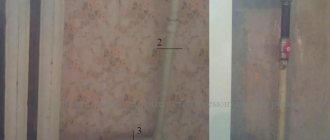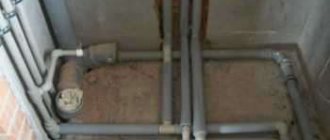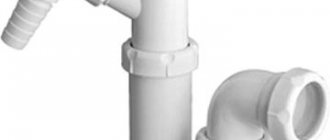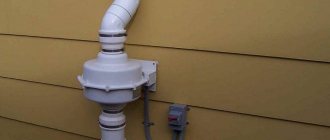Pipe fittings - what is it
The connecting elements of the pipeline include valves, adapters, plugs and other elements that allow you to control the activity of the system. The devices have different fields of application, made of cast iron, metal or plastic. The simplest designs are manually operated, the more complex ones are equipped with a mechanical or automatic drive.
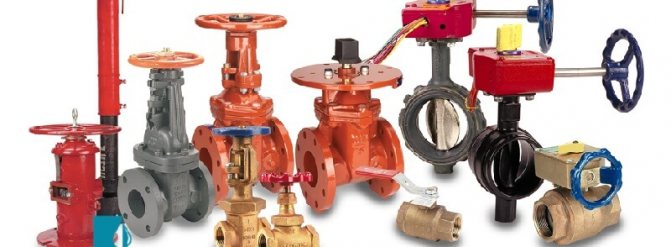
The choice depends on the characteristics and performance of the lines. The working environment (degree of heating, chemical or physical processes), pressure (normal, maximum, minimum) are taken into account. In addition, the possible external influence is calculated - mechanical loads, temperature drops.
What materials is it made of
Various materials are used for the production of pipe fittings. GOST R 55509-2013 indicates the requirements for the composition of the metals used. Cast iron used:
- gray СЧ15, СЧ20;
- malleable KCH30-6;
- with spheroidal graphite VCh40, VCh45.
Of metal alloys used:
- carbon steel, alloyed, high-alloyed;
- non-ferrous metals and alloys - bronze, brass, titanium alloy, aluminum, nickel.
Plastic products are widely used, these are polyvinyl chloride, polyvinyl chloride, polyethylene. Used to transport aggressive substances.
Tip: Recently, the plastic Walraven star Quick clips with a ratchet actuator that speed up the installation process are becoming more common.
Types of pipeline fittings
Reinforcement products are classified according to the method of application, purpose, design. The types of fittings on pipelines are as follows:
- flanged;
- connecting;
- for pipes made of different materials;
- for nuclear power plants.
Let us dwell on these types in more detail.
Flanged
A flange is a flat disc with a specified number of mounting holes. The flanges of adjacent elements fit snugly against each other. The connection is made by tightening the fastening bolts with nuts. Gaskets ensure tightness. Flanged fittings are installed in systems operating at different pressures and temperatures. The flange is welded to the pipe.


The flange mount is collapsible, which simplifies repair work, inspection and replacement of elements. It is made of cast iron or steel, it is used for pipelines from 50 mm in diameter, it can withstand temperatures up to 400 ° C, can be placed in a horizontal and vertical position.
Connecting
Pipeline fittings are used when connecting elements of different materials and diameters. At the point of joining of pipes made of steel and plastic, where the diameters of the connected elements differ, connecting fittings are used.
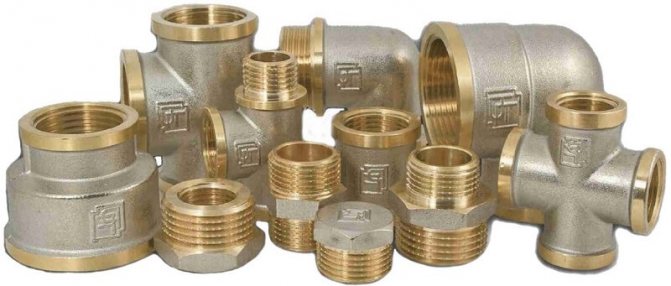

As additional parts, couplings, plugs and other fittings are installed, in the design of which there is no locking and adjusting mechanism. Such elements provide quick installation and replacement of pipeline parts. Connecting elements are produced with a section of 25-2020 mm, for pressure from 1 to 4 MPa from cast iron, steel, plastic.
Stainless
Stainless steel pipe fittings form a compound that does not react chemically with the working medium, which ensures the longevity of the system. Elements such as valves, taps, adapters, gate valves are used for stainless pipelines when transporting food liquids, alcoholic and non-alcoholic beverages.


Corrosion-proof elements form a strong connection that is resistant to corrosion and aggressive media, which ensures its use in the petrochemical and gas industries, pharmacology, and nuclear power plants. The parts do not interact with the transported products, do not change it and their structure.
NPP fittings
A nuclear power plant is a highly hazardous energy facility. Its design includes a large number of pipelines, industrial pipeline fittings are installed. The following requirements are imposed on the elements:
- The direction of movement of the working fluid must match the direction of the arrow on the body.
- You cannot use parts that do not correspond to the purpose.
- Access to all types of fittings must be free.
- The connecting elements of the pipeline heated during operation should be closed with a removable structure with thermal insulation fixed by means of a thread.
Individual parts of the pipeline under high or medium pressure are connected by welding or flanged fittings, which reduces the possibility of leaks. The material for the products must be high quality metals.
Important: to ensure the safety of the steam generators, safety valves are installed - main and auxiliary. To remove drainage from the circuit of the station, first a shut-off, then a control one.
Reinforcement of metal-plastic pipes
Reinforced-plastic pipes are used for indoor installation. This is internal plumbing and heating. The connection of the sections is carried out by valves, shut-off and transition valves and other elements. They are used at a coolant temperature up to 95 ° C and a pressure of 16 atm.
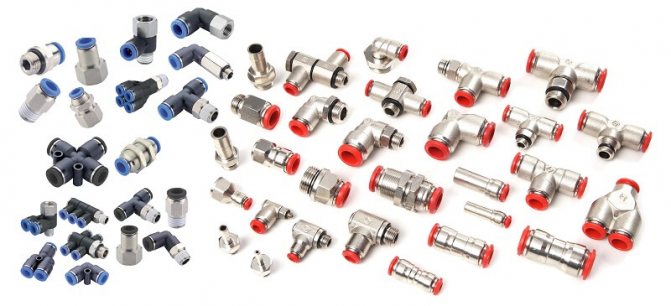

Metal-plastic pipelines are used in everyday life, have a neat appearance, threaded or press connection. The fittings are made of nickel-plated brass. The products have standard dimensions and are marked on their surfaces.
Fittings for polyethylene and polypropylene pipes
Fittings for plastic pipes are distinguished for pressure and non-pressure systems. For polyethylene pipes, a welded joint is considered the most reliable. As a result, we get a single cast sealed pipe.
On the advantages and disadvantages of various classifications of devices
Due to their high performance and aesthetic appearance, brass or stainless steel gate valves are currently the most popular. Such products in the water supply network can serve up to one and a half decades.
Despite this, research to improve the durability of plumbing fittings using new materials is ongoing. As a result, devices made of polymeric materials have appeared that can be operated indefinitely if they are not subject to disloyal methods of mechanical action.
Watch video - classification and types
For plastic water pipes, fittings are used from a similar material. Otherwise, at the junction with different materials, the wear will not be the same. And the overall service life of the system is determined by the material that wears the most.
One of the advantages of plastic water pipes is the fact that they do not have threaded connections. The elements are joined by soldering on special equipment or using adhesives. Such connections are as reliable as possible and can only be broken using brute force.
For main water networks, polyethylene pipes with a size of 820 - 1020 millimeters are mainly used. They are used with plastic fittings for the water supply systems of the water supply system. Such pipes easily withstand the pressure accepted for water, in most cases constituting no more than 20 atmospheres.
Metal pipes are connected with the same fittings.But, since threaded connections are less reliable, sealing materials and sealants must be used.
Consider the types and classifications
There are many designs of valves and taps for water supply. The most popular ones are:
- Cranes with axle-box crane.
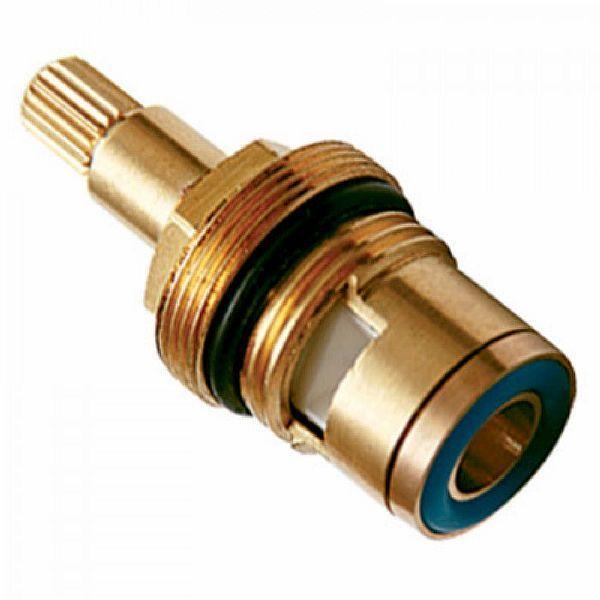

The flow of water through the pipe is blocked when the stem is twisted by its action on the rubber gasket, which sits on the seat and blocks the passage. The weak point in this system is the gasket, which must be replaced periodically. The presence of a spare gasket in the house with such taps is an objective necessity. The bodies of such valves are made of brass, less often of cast iron.
- Taps and valves with ceramic inserts
Such a design of the water supply shut-off valves has already become customary due to the high reliability of the throughput unit.
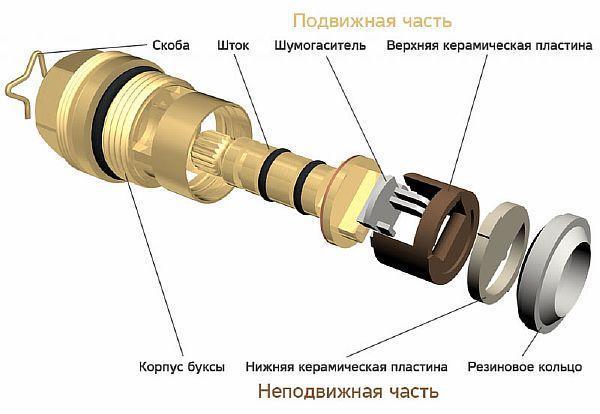

The passage of water from the pipe is made by turning the handle through an angle of about 180 degrees. At the same time, the openings in the two ceramic plates are combined, and a passage for water from the water pipe opens. Due to the high strength of the surface of the plates, their wear is very slow, and the use of a supporting rubber gasket in the lower (fixed part) of the crane-axle box provides compensation for wear and tightness of the connection. Details of the crane-axle box (and the crane itself) are made of brass.
- Ball Valves.
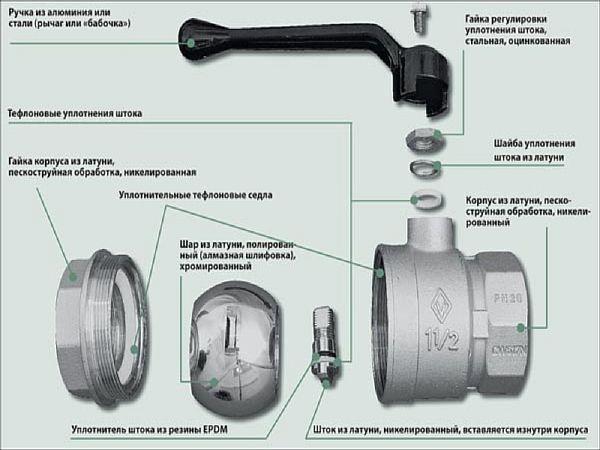

A ball made of brass with a high surface quality is used as a locking element in such devices. It is polished with diamond paste and then nickel-plated or chrome-plated. The hole in the ball corresponds to the size of the passage. When the stem handle is rotated, the ball rotates 90 degrees and closes / opens the hole. Wear-resistant Teflon rings are used as a seal. Not intended for pressure control.
In addition to these types of valves, many others are produced:
- taps for dumping air locks in the heating system;
- emergency pressure relief valves installed on vessels;
- valves for adjusting the pressure in the internal water supply system.
Ball valves are used to shut off the pipeline in case of emergency.
Technology and production methods
Manufacturing of pipeline fittings is a complex technological process that includes a series of sequential steps that ensure the production of reliable and marketable products.
Watch the video
The technology for the production of valves for pipelines provides for the following actions:
- Marketing in the market of relevant products in order to determine the effective (salable) range of products.
- Design and survey work to create models and types of effective products both in quality and in manufacturing costs.
- Development of production technology, determination of the optimal composition of equipment.
- Development of methods for effective non-destructive control of product quality.
- Development of effective advertising for your products.
- Logistics and sales of products.
The technology for the production of valves for pipelines can be presented as follows:
- Purchase of raw materials for production. Incoming quality control of raw materials and components.
- Production of blanks for the manufacture of fittings by casting from cast iron, brass and other suitable materials.
- Heat treatment of cast billets to give them the required mechanical properties.
- Mechanical processing of working surfaces to the required parameters of flatness and surface cleanliness. Turning of threaded connections.
- Electroplating protective coating. Nickel plating is usually used.
- Assembly of plumbing fittings using parts of our own production and components purchased through cooperation.
- Final quality control of finished products and transfer of finished products to the warehouse. It should be noted that intermediate control operations during the manufacture of fittings are performed after each technological step. For example, after casting and electroplating, ultrasonic testing is mandatory to detect cavities and other discontinuities.
- Sales of finished products.
Enterprises that intend to sell their products abroad need to certify them in accordance with ISO 9001. It is important that in accordance with the requirements of this standard, not only the end result (products) is regulated, but also the entire process of organizing production, starting from document circulation.
Watch the video
Types of locking devices
The shut-off structures of pipelines can be regulating. They are divided into four types:
- The gate valve has two mutually perpendicular positions relative to the pipe axis. Closes and opens the passage for the transported product.
- The valve is equipped with a closing or regulating mechanism, the movement of which is parallel to the direction of movement of the flow of the transferred substance.
- At the crane, the mechanism rotates around its own axis, moving up or down at different angles to the pipe axis.
- The valve is required to shut off and regulate the flow of the product in the pipeline. It can serve as a safety valve, condensate drain. It happens ball and valve.
Gate valves are more often used as a shut-off structure, valves are installed as control mechanisms. They work quickly, are characterized by high hydraulic resistance and tightness.
Views
The classification of parts for stopping the flow of gases, liquids is carried out according to various factors. Types of valves by connection method:
- flanged;
- flangeless.
The shape of the flanges can be triangular, square, round.
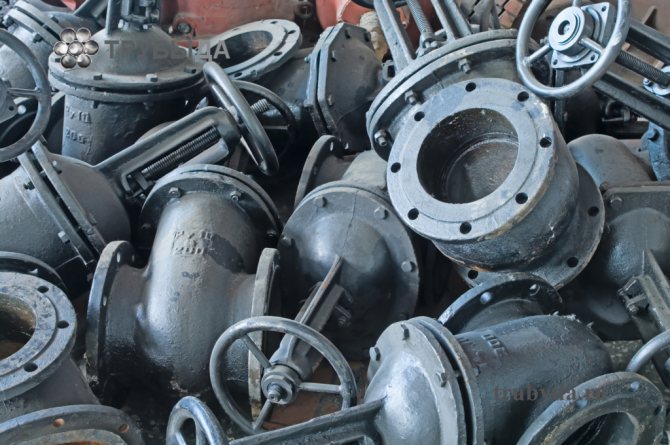

Heap of valves
Gate valve
The type of shut-off valves that are installed on the main pipelines. The main technical element is the spindle. It can be fixed or retractable. Gate valves may differ in technical characteristics, resistance to aggressive media.
The question may arise - what is the difference between a gate valve and a damper. In this regard, the main differences lie in the fewer details of the dampers. This makes them less likely to break.
The valves are not manufactured from chemical resistant materials. Because of this, they are only used to create water supply systems. Dampers must be used to move chemicals.
When working with aggressive media, it is required to correctly approach the choice of fittings. For example, it can be bellows valves, flanges made of porcelain, which are coated with glaze.
Valve
The shut-off valve is a body with two pipe fittings, in which there is a shutter that moves by means of a threaded connection. When the valve rotates, a stem with a flywheel moves, which block or open the flow of the working medium. They can block the water supply, regulate the supply of liquid or gas.
Shut-off ball valve
It is a cast body with threads on both sides for connecting to pipes. To shut off the flow, there is a knob with which you can change the position of the gate valve. Additionally, a rubber gasket is installed under the handle.
Cranes are:
- multi-way, straight-through.
- manual, equipped with electric drives.
The bolt can be moved by pressing or twisting.
An additional feature of the tap is to adjust the gas or liquid supply. They are made of steel, cast iron, bronze, plastic, porcelain.
Valve
The most common device used to shut off pipelines. The position of the damper can be adjusted using the handwheel. Expensive models are equipped with electric drives. Most often they are installed on sewer systems. Not suitable for liquids over 50 degrees Celsius.
Closures
The shutter is the main part of any closing mechanism. If it is defective, liquid or gas will destroy the pipeline. Most often they are made of steel or cast iron. The most common are butterfly valves.
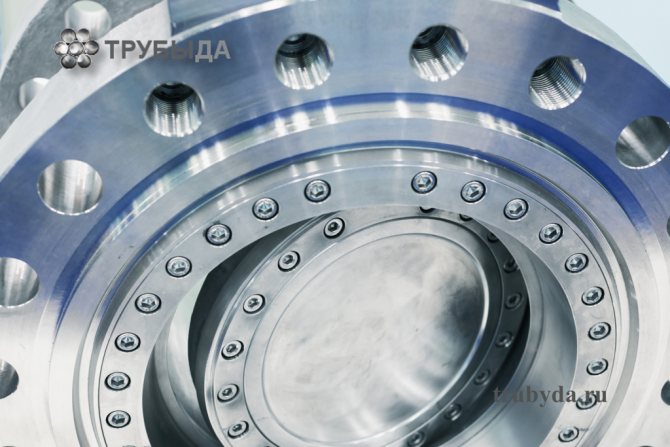

Butterfly valve of shut-off valves
Rebar classification
Pipe fittings are products classified according to their application, sealing methods, and design features. Let's consider some of them.
Scope of application
Based on performance characteristics, there are: vacuum, cryogenic, shut-off valves. Depending on the purpose, these are control, reduction, anti-surge devices. The transported product determines their tightness, resistance to chemical and aggressive media.
Connection type
The method of connecting to the pipeline subdivides fittings into flanged, interflanged, coupling, threaded, and welded. When welding fittings with pipes, connecting nozzles are used; when coupling, internal threads and additional nozzles are used.
By sealing method
Depending on the used sealing elements, fittings are distinguished:
- stuffing box;
- membrane;
- bellows;
- hose.
The stuffing box uses a fiber packing impregnated with sealant for sealing. The diaphragm seal is an elastic disc that is clamped at the junction.
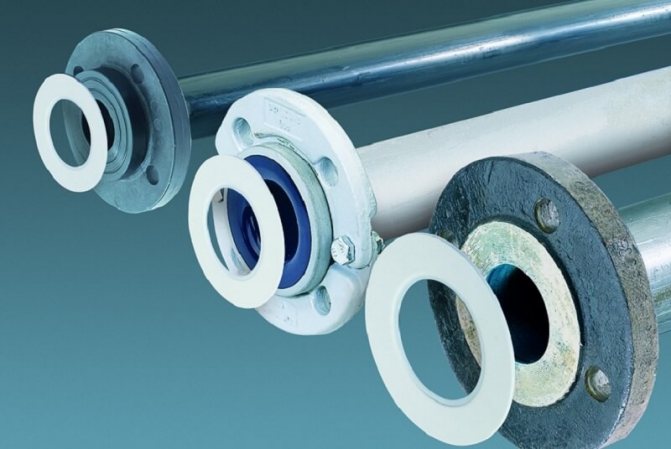

The bellows is a corrugated tube that folds when clamped. The hose design uses a flexible hose that is pinched, cutting off or reducing the fluid flow.
By the design of the connecting pipes
Allocate the device through passage, angular, partial bore, full bore. In a partial bore, the inner section of the connecting pipe is less than the diameter of the pipe entering the fitting. In full bore fittings, all diameters are the same.
Types of fittings for pipelines
Modern pipeline systems are a complex complex of engineering structures, each element of which performs a specific function, any failures in the well-established operation of the complex can lead to accidents and have certain environmental or economic consequences.
One of the main criteria that logically divides all fittings for pipeline systems is the functional purpose. In other words, the difference between each part is determined by what it is used for.
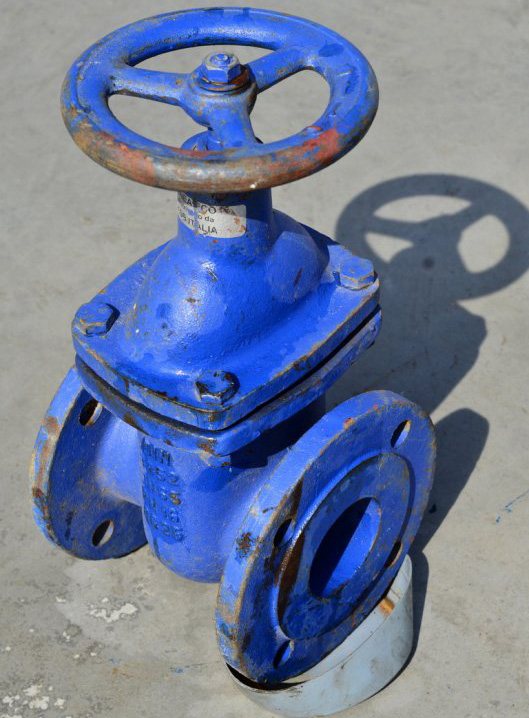

Thus, pipe fittings can be divided into six groups according to the function that each of them performs in the system.
| Locking devices | Designed for a hermetic complete blocking of the movement of the working medium. It is the degree of tightness that determines the quality of the parts of this group. |
| Regulatory | It is used to regulate the flow, quantity and speed of the transported medium. It determines the safety and efficiency of technological processes. |
| Disconnecting or protective | Provides overlap of the movement of the working medium in a certain element when the permissible technological parameters are exceeded. Unlike safety valves, the supply of the working medium is interrupted in a certain area, due to the shutdown of one element. |
| Safety | It is aimed at preventing emergency situations for any reason: from operator error to exceeding the operating parameters of the network. The task is to prevent undesirable consequences of violations. |
| Distribution and mixing | Details for dividing a stream into separate branches or mixing several streams into one.There are options for fittings that perform only a distribution function or only a mixing function. |
| Back | Designed to automatically prevent backflow of fluid in the system. |
Note! The combination of the indicated actions is possible in parts of a combined type, for example, in shut-off and control devices.
Pipe fittings marking
For orientation in the types of fittings, special symbols are used. They indicate the main technical parameters of the products. Different manufacturers set their own markings. The most popular is the labeling of JSC Scientific and Production. It contains tables indicating the type of product, drive method, material of manufacture, and other designations.
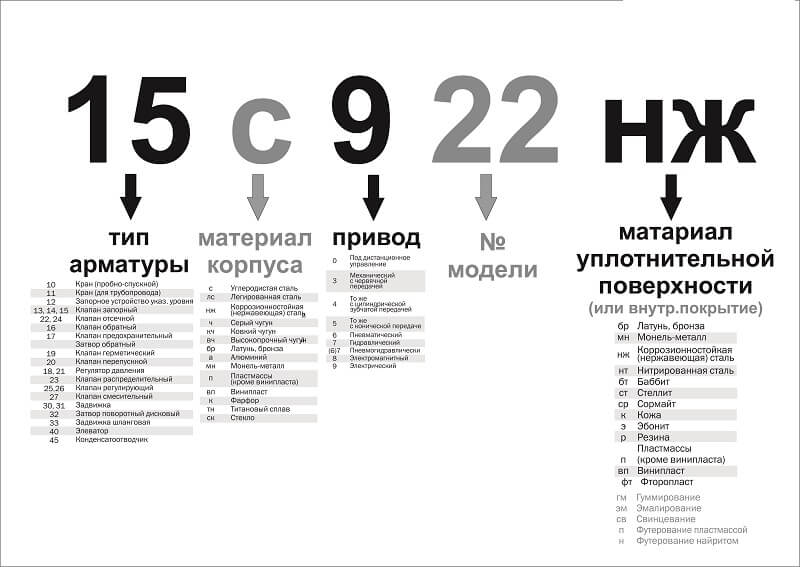

As an example, we will decipher the following designation: 13br042nzh - a shut-off valve, brass, stainless steel seal, has a remote control, model 42. Sometimes letter marking is used: KSH - ball valve, KTS - three-way steel valve and others.
Stop valves marking
The key dimensions of all types of shut-off valves comply with GOST, therefore, manufacturers must leave the appropriate marking on the product bodies. It contains information about the manufacturer, material, control, working dimensions. The standardization of the parameters simplifies the installation of fittings, and the marking of the selection.
Construction fittings.
In addition to valves and pipe fittings in construction, it is often necessary to deal with fittings in the form of steel or plastic rods.
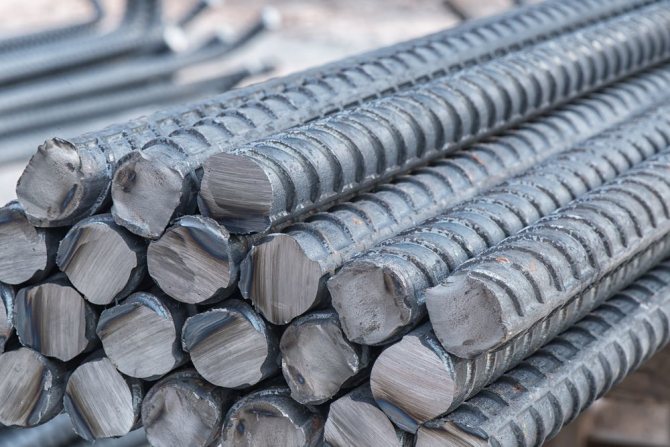

Very often, such reinforcement is used to create a load-bearing frame inside concrete structures.
More information about this type of reinforcement can be found in a separate article: construction reinforcement, types of characteristics.
Testing of pipeline fittings
To ensure trouble-free operation of pipelines, a test of pipe valves and other connecting elements is carried out. The tests include the following steps:
- Hydraulic loads to check the strength, impermeability of the material, the absence of shear of structural elements.
- Checking the tightness of the shut-off elements.
At the first stage, industrial valves are tested under pressure from pumps. Test conditions are specified in the technical documentation.
Pressure is applied to an open working element with a closed hole in the pipe. If leaks are found in welds and other joints, the fittings are considered unusable.
When testing devices for tightness, liquid under pressure is supplied in turn from different directions to the device. Inspect the fitting on the opposite side of the pressure supply. Valves, dampers, valves are pressurized from one side.
Important: for the classification of products according to the sealing class, GOST R 9544 - 75 "Pipeline fittings" are followed. The standard indicates three classes of tightness, determined by the purpose of pipelines.
Connection of gate valves to the pipeline
https://www.youtube.com/watch?v=OEkFB7zR9SQ
The procedure for installing valves on plastic pipes has few features that have appeared because we are talking about the articulation of elements made of different materials. But this is not the only way, since this element of valves can be installed on pipelines, both metal and metal-plastic. Any option is possible.
Connection to metal water pipes
There are two connection methods: threaded and flanged. For this, a section with a length equal to the size of the body is cut out of the pipe. Threads are cut on the cleaned ends of the pipes. Assemble the structure by sealing the connection with linen thread or special tape. In the case of a flange joint, the seal is carried out by means of rubber gaskets. Bolts provide reliability. The alternative is a welded joint.
Installation in a system of plastic pipes
Welding cannot be used. But you can use special inserts that involve fusing plastic on one side and a flange connection on the other. The pipes are heated up to +260 degrees, and after joining, they provide immobility until they set. This is about 10 minutes until all the elements have cooled down.
Features of installation on chimneys
A base is laid out of bricks in the channel. On which the valve is installed. It is important not to forget, and to provide for special grooves in the brick for the gate and a hole for the handle. The structure is covered with masonry on a masonry cement-sand mortar.

